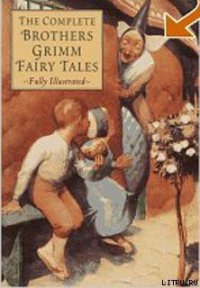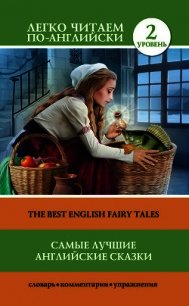Celtic Fairy Tales - Jacobs Joseph (лучшие книги читать онлайн txt) 📗
WALES makes a poor show beside Ireland and Scotland. Sikes’ British Goblins, and the tales collected by Prof. Rhys in Y Cymrodor, vols. ii.-vi., are mainly of our first-class fairy anecdotes. Borrow, in his Wild Wales, refers to a collection of fables in a journal called The Greal, while the Cambrian Quarterly Magazine for 1830 and 1831 contained a few fairy anecdotes, including a curious version of the “Brewery of Eggshells” from the Welsh. In the older literature, the Iolo MS., published by the Welsh MS. Society, has a few fables and apologues, and the charming Mabinogion, translated by Lady Guest, has tales that can trace back to the twelfth century and are on the border-line between folk-tales and hero-tales.
CORNWALL and MAN are even worse than Wales. Hunt’s Drolls from the West of England has nothing distinctively Celtic, and it is only by a chance Lhuyd chose a folk-tale as his specimen of Cornish in his Archaeologia Britannica, 1709 (see Tale of Ivan). The Manx folk-tales published, including the most recent by Mr. Moore, in his Folk-Lore of the Isle of Man, 1891, are mainly fairy anecdotes and legends.
From this survey of the field of Celtic folk-tales it is clear that Ireland and Scotland provide the lion’s share. The interesting thing to notice is the remarkable similarity of Scotch and Irish folk- tales. The continuity of language and culture between these two divisions of Gaeldom has clearly brought about this identity of their folk-tales. As will be seen from the following notes, the tales found in Scotland can almost invariably be paralleled by those found in Ireland, and vice versa. This result is a striking confirmation of the general truth that folk-lores of different countries resemble one another in proportion to their contiguity and to the continuity of language and culture between them.
Another point of interest in these Celtic folk-tales is the light they throw upon the relation of hero-tales and folk-tales (classes 2 and 3 above). Tales told of Finn of Cuchulain, and therefore coming under the definition of hero-tales, are found elsewhere told of anonymous or unknown heroes. The question is, were the folk-tales the earliest, and were they localised and applied to the heroes, or were the heroic sagas generalised and applied to an unknown [Greek: tis]? All the evidence, in my opinion, inclines to the former view, which, as applied to Celtic folk-tales, is of very great literary importance; for it is becoming more and more recognised, thanks chiefly to the admirable work of Mr. Alfred Nutt, in his Studies on the Holy Grail, that the outburst of European Romance in the twelfth century was due, in large measure, to an infusion of Celtic hero-tales into the literature of the Romance-speaking nations. Now the remarkable thing is, how these hero tales have lingered on in oral tradition even to the present day. (See a marked case in "Deirdre.”) We may, therefore, hope to see considerable light thrown on the most characteristic spiritual product of the Middle Ages, the literature of Romance and the spirit of chivalry, from the Celtic folk-tales of the present day. Mr. Alfred Nutt has already shown this to be true of a special section of Romance literature, that connected with the Holy Grail, and it seems probable that further study will extend the field of application of this new method of research.
The Celtic folk-tale again has interest in retaining many traits of primitive conditions among the early inhabitants of these isles which are preserved by no other record. Take, for instance, the calm assumption of polygamy in “Gold Tree and Silver Tree.” That represents a state of feeling that is decidedly pre-Christian. The belief in an external soul “Life Index,” recently monographed by Mr. Frazer in his “Golden Bough,” also finds expression in a couple of the Tales (see notes on “Sea-Maiden” and “Fair, Brown, and Trembling”), and so with many other primitive ideas.
Care, however, has to be taken in using folk-tales as evidence for primitive practice among the nations where they are found. For the tales may have come from another race–that is, for example, probably the case with “Gold Tree and Silver Tree” (see Notes). Celtic tales are of peculiar interest in this connection, as they afford one of the best fields for studying the problem of diffusion, the most pressing of the problems of the folk-tales just at present, at least in my opinion. The Celts are at the furthermost end of Europe. Tales that travelled to them could go no further and must therefore be the last links in the chain.
For all these reasons, then, Celtic folk-tales are of high scientific interest to the folk-lorist, while they yield to none in imaginative and literary qualities. In any other country of Europe some national means of recording them would have long ago been adopted. M. Luzel, e.g., was commissioned by the French Minister of Public Instruction to collect and report on the Breton folk-tales. England, here as elsewhere without any organised means of scientific research in the historical and philological sciences, has to depend on the enthusiasm of a few private individuals for work of national importance. Every Celt of these islands or in the Gaeldom beyond the sea, and every Celt-lover among the English-speaking nations, should regard it as one of the duties of the race to put its traditions on record in the few years that now remain before they will cease for ever to be living in the hearts and memories of the humbler members of the race.
In the following Notes I have done as in my English Fairy Tales, and given first, the sources whence I drew the tales, then parallels at length for the British Isles, with bibliographical references for parallels abroad, and finally, remarks where the tales seemed to need them. In these I have not wearied or worried the reader with conventional tall talk about the Celtic genius and its manifestations in the folk-tale; on that topic one can only repeat Matthew Arnold when at his best, in his Celtic Literature. Nor have I attempted to deal with the more general aspects of the study of the Celtic folk-tale. For these I must refer to Mr. Nutt’s series of papers in The Celtic Magazine, vol. xii., or, still better, to the masterly introductions he is contributing to the series of Waifs and Strays of Celtic Tradition, and to Dr. Hyde’s Beside the Fireside. In my remarks I have mainly confined myself to discussing the origin and diffusion of the various tales, so far as anything definite could be learnt or conjectured on that subject.
Before proceeding to the Notes, I may “put in,” as the lawyers say, a few summaries of the results reached in them. Of the twenty-six tales, twelve (i., ii., v., viii., ix., x., xi., xv., xvi., xvii., xix., xxiv.) have Gaelic originals; three (vii., xiii., xxv.) are from the Welsh; one (xxii.) from the now extinct Cornish; one an adaptation of an English poem founded on a Welsh tradition (xxi., "Gellert”); and the remaining nine are what may be termed Anglo-Irish. Regarding their diffusion among the Celts, twelve are both Irish and Scotch (iv., v., vi., ix., x., xiv.-xvii., xix., xx., xxiv); one (xxv.) is common to Irish and Welsh; and one (xxii.) to Irish and Cornish; seven are found only among the Celts in Ireland (i.-iii., xii., xviii., xxii., xxvi); two (viii., xi.) among the Scotch; and three (vii., xiii., xxi.) among the Welsh. Finally, so far as we can ascertain their origin, four (v., xvi., xxi., xxii.) are from the East; five (vi., x., xiv., xx., xxv.) are European drolls; three of the romantic tales seem to have been imported (vii., ix., xix.); while three others are possibly Celtic exportations to the Continent (xv., xvii., xxiv.) though the, last may have previously come thence; the remaining eleven are, as far as known, original to Celtic lands. Somewhat the same result would come out, I believe, as the analysis of any representative collection of folk-tales of any European district.


